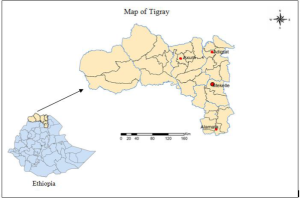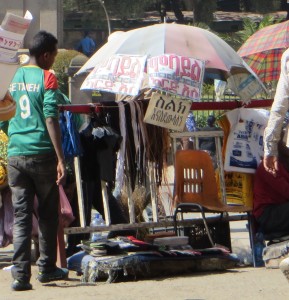Tsega Mezgebo from Mekelle University presented research findings from the urban Tigray area at EDRI on 8th May, 2015. Her investigations, along with her co-researcher, Catherine Porter, covered the factors that influence decision making of farming households to adopt income diversification strategies as their traditional livelihoods become increasingly marginalized with urban expansion.
The rapid urban expansion, a characteristic of many developing countries, is occurring in many parts of Ethiopia, whereby rural villages near towns are being incorporated into the urban sprawl. The changes in the consumption and production behaviors of subsistence farm households in the villages, along with the absence of markets, particularly for labor and land, can result in the rural-urban livelihood transition being far from smooth. This research illustrates this transition using data from farm households in urban Tigray, Ethiopia.
Data is used from two groups of farm households – differentiated by the denoted local authority as urban or rural – to identify factors that influence the farm households’ decisions to adopt an income diversification strategy. Multinomial logit was applied to identify these factors.
The results show that agriculture continues as an important source of income, although access to farmland is very limited. Combining farm and skilled (financially rewarding) nonfarm employments is the dominant strategy deployed by the better-off farm households, regardless of the location that they belong too. Location of the household, however, influences income diversification strategies of the farm households in the lowest income quartile (the poorest group). The urban poor participate less in unskilled (low-paying) nonfarm employment, compared to the rural poor. Additionally, labor-poor farm households are often marginalized in the nonfarm sector. And, it is experience in this sector, rather than a lack of money, that is the decisive factor for the farm household to engage in remunerative employment. Other influences include inflation and possibly rainfall in some areas, as well as income gained from PSNP (Productive Safety Net Programme).
This research has important implications for poverty reduction strategies. With the encroachment of urban living on a previously rural, subsistence environment, targeted interventions from the government should be designed to improve the productive capacity of the poor. In addition, the land compensation package offered to farmers whose land has been allocated as urban, should be revised and simultaneously incorporate capacity building training with special emphasis on labor-poor farming households.
Finally, further studies to understand the poverty dynamics and risk perceptions of farming households in urban areas, would help contribute to more relevant government approaches and long-term strategies to tackling this growing trend in Ethiopia.

